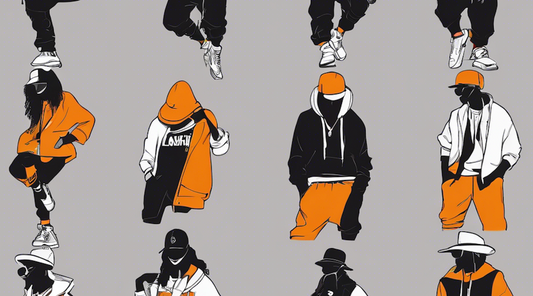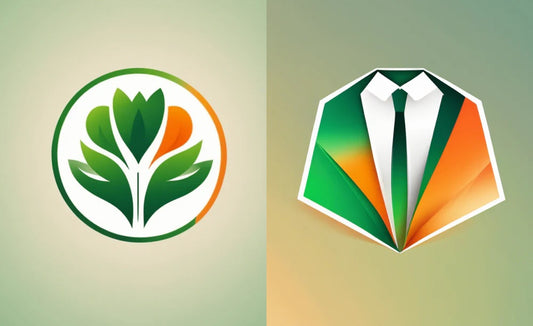Hello! It's Yuri from OpenFashion’s PR team again.
In this blog, we have a roundtable discussion featuring members who, in my opinion, are proficient at utilizing the image generation AI, "Midjourney," at OpenFashion. This blog is divided into two parts; in the first part, we explored what goes on in the minds of our participants as they use AI to generate images.
■[Image Generation AI - Part 1] Midjourney for Creators: How Far Can We Express Our Ideals?
https://open-fashion.com/blogs/article/image-generation-ai-part-1-midjourney-for-creators-how-far-can-we-express-our-ideals
In this second part, I intend to delve a bit deeper, asking more specific questions like, "how can we generate images that are closer to our envisioned concepts?" Although this part of the blog can be enjoyed independently, reading the first part will enhance your understanding, so feel free to check it out!
Let's start the interview.
I was thrilled, thinking, "It turned out just as I imagined!"
YURI: It's been about half a year since all of you started using Midjourney. Do you feel you’ve gotten the hang of it compared to when you first started?
MASAYO: Definitely, I do feel I’ve become more adept at it. I was able to create images with enjoyment, like those I made in July.
MASAYO: I love band T-shirts and wanted something that felt like it belonged to a band of the future. As I gained experience, I discovered that adding the word "futuristic" would bring out a futuristic vibe. I also tried incorporating phrases like "liquid-like movement" that I saw international users adding to their prompts. So, I’ve been extracting words from prompts of artworks I like and combining them with my own.
YURI: How about you, RIE?
RIE: Like MASAYO, I think the quality of the generated images has improved over time.
In the early days of using Midjourney, I wasn't even sure what to create. I would translate the descriptions of cute clothes I found on e-commerce sites into English and use them as prompts to generate images on Midjourney.
YURI: And what were your thoughts when you saw the images generated from those descriptions?
RIE: I remember being thrilled, thinking, "It turned out just as I imagined!" (laughs)
I started getting hooked on image generation from the point when I began adding my own essence to those images, like wanting to make them look like they were on an airport runway, and adjusting the prompts accordingly.
YURI: So that’s how you initially approached image generation.
Now, where do you draw inspiration from when generating images? I've heard some say they are not sure what to create.
RIE: For me, it’s often from everyday moments. Trying out something inspired by the contents of my refrigerator or something that caught my eye in daily life.
RIE: For instance, this image was inspired by watching my son and mother-in-law playing badminton. I thought it would be interesting to see a stylish grandma in colorful clothes holding a racket!
I wanted to grasp the tendency of the generated images, so at first, I looked for images in my preferred taste, used the “describe” function to get words, and tried to mix them to fit my image. I have been diligently creating images closer to my ideal by selecting and using those words.
It’s somewhat challenging to generate dynamic images. In this image, rackets and balls are attached to strange places, but that unexpected outcome made it fun.
YURI: I see, you draw a lot of inspiration from daily life.
RIE: Exactly! It's not always that what you intend to create is reproduced faithfully. It can be interesting just to convert things you notice in daily life into words and instruct Midjourney with them.
Learning from Others' Prompts Can Be Educational
YURI: I believe among our blog readers, there are people who are still pondering, "This is what I want to create with AI!" Do you have any tips or tricks to share?
MASAYO: Since Midjourney is a U.S. service, the prompts are in English. Because of this, the interpretation of even a single English word can be different from Japan.
For example, if you take the Japanese term for "scraps," it could be translated into English as "cut-off piece," "scraps," etc. Different English terms can result in different generated items, so it's interesting to try out various English equivalents of "scraps."
SAKI: I wouldn't say that I can generate my ideal images just yet. However, by looking at others' works and incorporating expressions (keywords) that I find appealing, I've been able to get closer to the desired output.
RIE: I agree. There is something to be said for "adding elements (keywords) and imitating" others.
YURI: So, there’s no need to create something original from scratch, right?
SAKI: Exactly, the image generated by Midjourney can vastly change depending on the other words combined with a single directive word. Even if you use the same prompts as someone else, the generated output can be completely different, and that's one of the charms of image generation AI.
YURI: Interesting! Is there less resistance to using what others have already employed in the world of AI?
SAKI: Obviously, it’s legally not allowed to use specific brand names in prompts for commercial purposes. In traditional art, too, if you mimic something you like, the output can be very similar, bordering on imitation. But with Midjourney, it feels like it’s at a phase before that.
It’s akin to knowing which pen a manga artist uses – if you want to draw a similar line, it makes sense to use the same pen. Borrowing elements of others’ prompts can be a learning experience and is probably a good thing.
YURI: What about you, MASAYO?
MASAYO: It’s acceptable to partially reference others’ prompts, especially with an English service where there are expressions and phrases unique to non-Japanese speakers.
I learned a lot by incorporating parts of prompts like "cat walk model" into my own.
YURI: Indeed, such specific English terms aren’t something you’d easily get from DeepL translations.
SAKI: Within our AI fashion platform "OpenFashion," there is a concept of an "open space."
I’d be pleased if others used my prompts, and combining elements of prompts shared by others with your own work aligns with the brand concept of OpenFashion, I believe. So, for those who are unsure what to create or can’t generate as desired, I encourage you to look at various works, gain inspiration, and use them as references for your own creations.
YURI: It ties back to the democratization of fashion, doesn’t it?
RIE: Exactly!
At OpenFashion, we also offer a "Prompt Book" for free, where works created with the image generation AI, along with their prompts, are published. We would love for interested individuals to take a look.
YURI: Ending with a plug for our service, classic! (laughs)
But, truly, the Prompt Book is filled with magnificent works and will definitely expand everyone's creative horizons.
Thank you to RIE, SAKI, and MASAYO for joining us today!
Closing Notes
You can view the Prompt Book and related blogs at the following URLs!
■Prompt Book
https://omnis.notion.site/Event-Resource-Hub-eede4c0f68a84db29d5830cbd878e4e0
*Please view each of the "Prompt Book #1~3" from the text links on the above page
■A Collection of AI-Generated Artworks: Introducing the Charm of Design Prompt Books #1-3
https://open-fashion.com/blogs/article/a-collection-of-ai-generated-artworks-introducing-the-charm-of-design-prompt-books-1-3

![[Image Generation AI - Part 2] Behind the Scenes of AI-Enhanced Fashion Design: The Key to Bringing Ideals into Reality](http://open-fashion.com/cdn/shop/articles/Part2_Behind_the_Scenes_of_AI-Enhanced_Fashion_Design.jpg?v=1696482843&width=1100)
![[Easy on Your Smartphone] How to Create ZEPETO Items with Maison AI](http://open-fashion.com/cdn/shop/articles/387ac76082623e94218de7c076a87675.jpg?v=1712232721&width=533)

